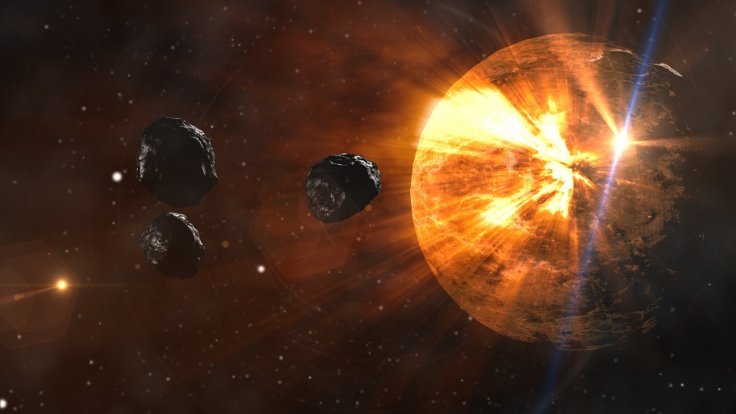The latest study has revealed a possible origin of giant asteroid that struck Earth 66 million years ago, making non-avian dinosaurs go extinct. The study claims that the 6-mile-wide (9.6 kilometers) object came from the outer reaches of the solar system's main asteroid belt, situated between Mars and Jupiter. It is called a dark asteroid as it is made up of space rocks that include a chemical makeup making them appear darker than other asteroids.
The massive event had caused a mass extinction, where at least 75 percent of plant and animal species vanished from Earth, including causing the mass death of non-avian dinosaurs.
The proof for extinction of non-avian dinosaurs have previously been found buried in the Chicxulub crater, a 90-mile-wide [145 km] circular scar in Mexico's Yucatan Peninsula, where giant asteroid struck Earth.

Theories Proved Wrong
The impactor object, found on the outside the main steroid belt, is said to have been part of a class of carbonaceous chondrites. This is a primitive group of meteorites that have high ratio of carbon.
It is speculated that these asteroids were formed early on in the solar system's history. The study also claimed that half of the expelled asteroids were the dark carbonaceous chondrites, which matches the type thought to have caused Chicxulub crater.
Previously, it was told that impactor came from a family of asteroids from the inner part of the main asteroid belt. There was also a theory stating that the impact [Chicxulub carter] was caused by a long-period comet. Both these findings have been proved wrong with the new study.
The new study was conducted by Southwest Research Institute in Colorado and was published in the journal Icarus. This time, researchers had developed a computer model to check the process of main belt asteroids escaping toward Earth. The study also concentrated on finding out if this escape caused the extinction of dinosaurs.
The results showed that asteroids, which are more than 6 miles wide collides with Earth once in every 250 million years. Thus the current study has proved that the frequency of such a collision is five times more common than previous estimations.
Future Large Impactors
Along with this, researchers have found the origins of other asteroids that have struck Earth in the past including the Vredefort crater in South Africa and the Sudbury Basin in Canada. However, both these collisions did not have an impact as large as the Chicxulub carter did.
Currently, with the help of these findings, researchers are likely to find out the source location and impact of future large impactors. Speaking to Live Science, David Nesvorný, a researcher from the Southwest Research Institute in Colorado said: "We find in the study that some 60 percent of large terrestrial impactors come from the outer half of the asteroid belt ... and most asteroids in that zone are dark/primitive. So there is a 60 percent — 3 in 5 — probability that the next one will come from the same region."









